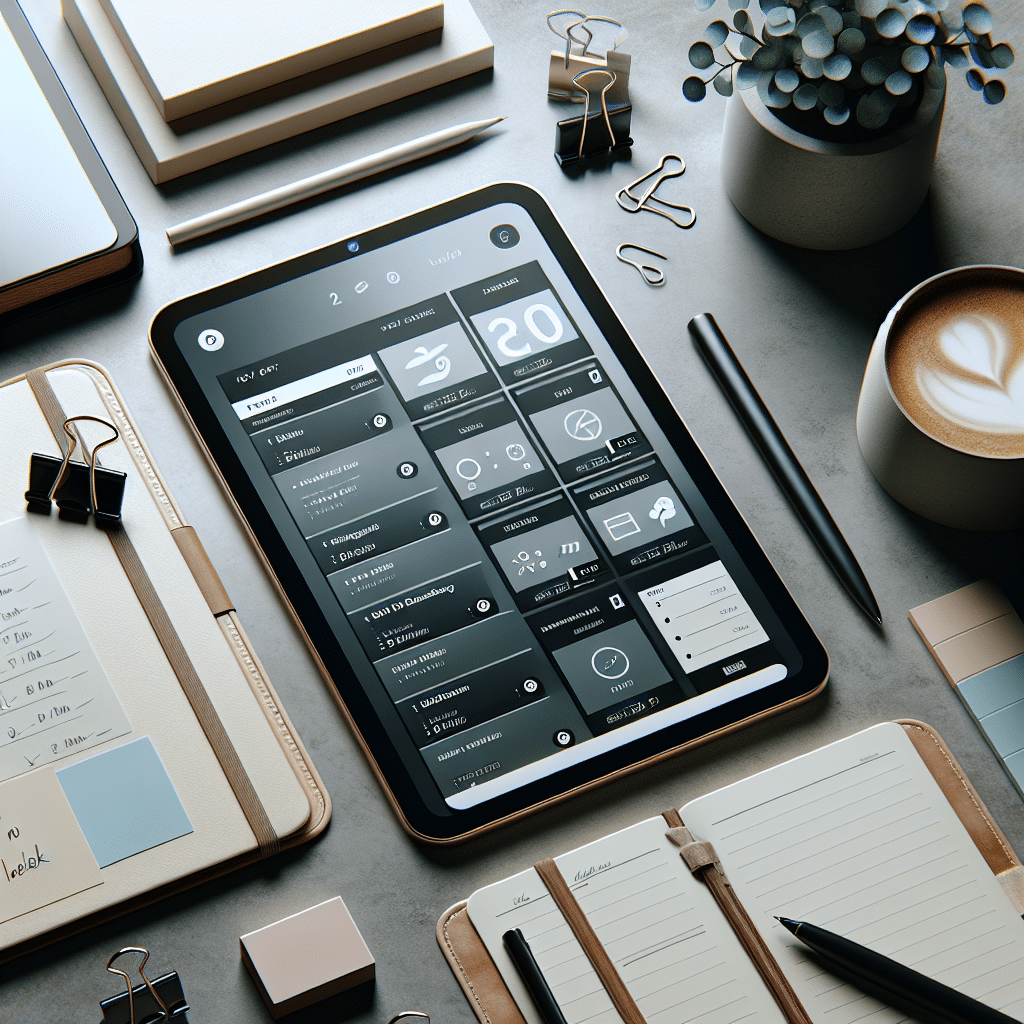The Rise of Digital Planners for Work from Home
Understanding Digital Planners
Digital planners combine traditional planning tools with advanced technology, offering a more efficient way to organize tasks and schedule. Unlike paper planners, digital planners can be accessed across devices, syncing seamlessly with calendars, reminders, and to-do lists. They come in various formats including apps, PDFs, and interactive online documents, allowing users to choose what fits their lifestyle best.
Benefits of Using Digital Planners at Home
-
Flexibility and Accessibility
Digital planners provide unparalleled flexibility. You can access your planner on multiple devices—be it a smartphone, tablet, or computer—eliminating the need for physical space. This accessibility ensures that you can stay organized no matter where you are working from home. -
Customization
Most digital planners offer customization options, allowing you to tailor your planner to your specific needs. This may include color-coding tasks, creating sections for different projects, or integrating personal goals. Such flexibility can help you streamline your organizational system. -
Environmental Impact
Using digital planners reduces the use of paper, which is a significant environmental benefit. In a world increasingly focused on sustainability, opting for a digital planner aligns with eco-friendly practices.
Key Features to Look For
-
Integration with Other Tools
Look for planners that integrate with calendars, email, project management tools, and other applications. This feature helps centralize all tasks and deadlines, making time management easier. -
Task Management Capabilities
Many digital planners include task lists, subtasks, and deadlines. Some even allow you to add priority levels or reminders, helping you focus on what’s urgent. -
Collaboration Tools
If you work in a team, collaboration features are crucial. Many digital planners allow sharing between users, enabling group projects where tasks and deadlines can be jointly monitored. -
Cloud Storage
Opt for planners that offer cloud storage to ensure that all your notes and tasks are backed up and accessible from anywhere. This is especially important for those who switch between devices.
Popular Digital Planners for Remote Work
-
Notion
Notion is a versatile app that functions as a note-taking tool, project management application, and digital planner all in one. Its high degree of customization and variety of templates make it a favorite among remote workers. -
Trello
Trello is a visual tool that uses boards, lists, and cards to help organize tasks. It’s particularly effective for team collaboration and has features that allow multiple users to contribute to planning and project management. -
Asana
Asana facilitates task management and team collaboration, making it ideal for work-from-home scenarios. Users can create projects, set deadlines, and monitor progress with ease. -
Todoist
Todoist is a straightforward task management tool that lets users organize their to-dos with ease. It features a user-friendly interface and integrates well with other productivity applications. -
Microsoft OneNote
For those who prefer a more traditional note-taking feel, Microsoft OneNote allows users to create notebooks that mimic paper planners. It supports multimedia notes, tagging, and search features.
How to Maximize Your Digital Planner
-
Schedule Regular Planning Sessions
Set aside time each week to review and update your plans. This practice not only keeps your planner current but also helps you reflect on your week and plan for the next. -
Utilize Reminders and Notifications
Most digital planners come with reminder functions. Use them to notify you of impending deadlines or tasks, ensuring you stay on track. -
Incorporate Goal Setting
Utilizing your planner for long-term goals can be incredibly beneficial. Break down larger goals into actionable tasks to make them manageable. -
Categorize Tasks
By categorizing tasks (work, personal, urgent), you can quickly identify what needs your attention first. Color-coding is an effective way to implement this system visually. -
Leverage Templates
Many digital planners offer pre-made templates for tasks, projects, or calendars. These templates can save time and provide structure, allowing you to focus on content rather than formatting.
Conclusion
Adapting to a work-from-home lifestyle presents unique challenges and opportunities for productivity. By leveraging the capabilities of digital planners, remote workers can enhance their organizational efforts, collaborate more effectively, and improve their overall efficiency. The key lies in selecting the right tool, utilizing its features to the fullest, and maintaining a consistent planning practice. Ultimately, the transition to digital planners can transform the often chaotic experience of working from home into a structured and empowering endeavor, allowing you to reclaim time and focus on what truly matters.
